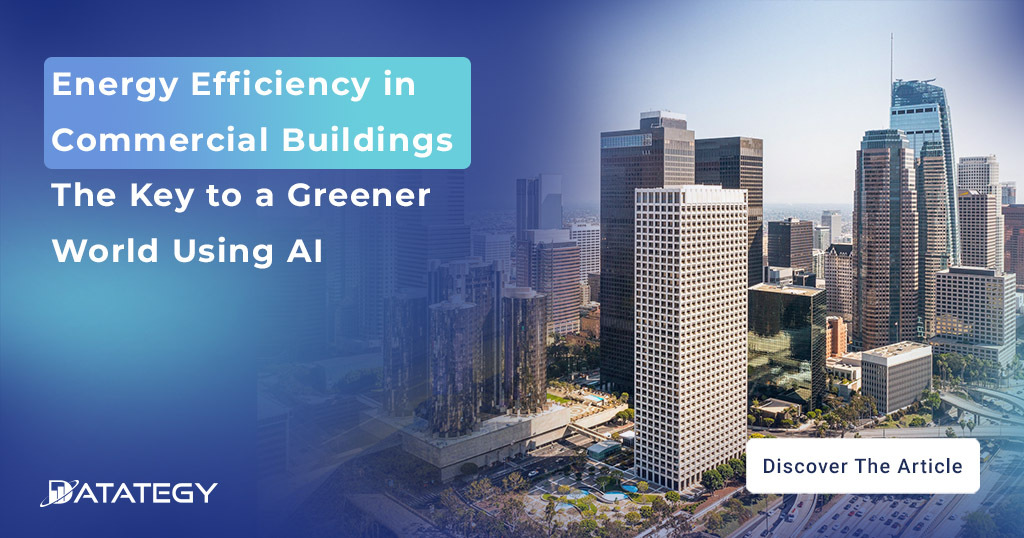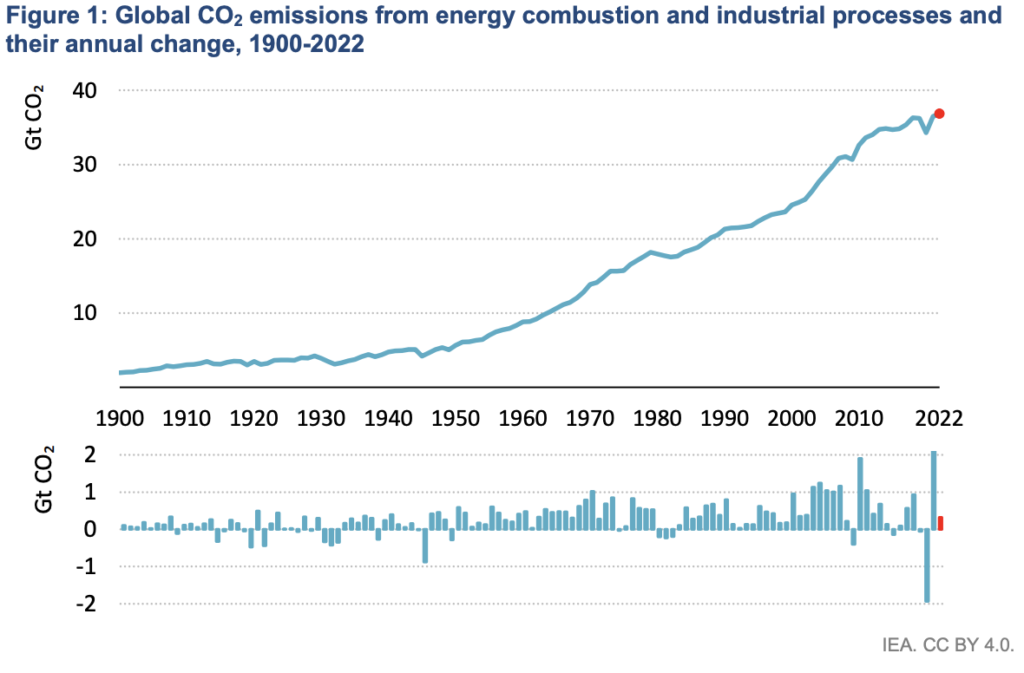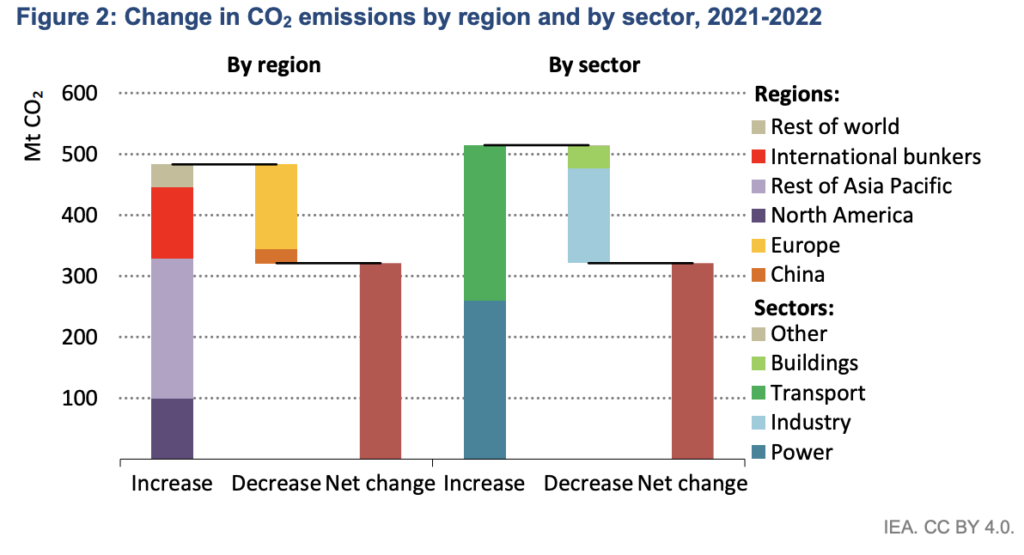How to Orchestrate AI Deployment in Defense Infrastructures? The need...
Read MoreEnergy Efficiency in Commercial Buildings: The key to a Greener World using AI
Table of Contents
ToggleA large amount of the world’s energy use and greenhouse gas emissions are caused by the energy consumption of commercial buildings. In fact, the International Energy Agency (IEA) estimates that buildings use over 40% of the world’s energy and contribute about one-third of its carbon emissions. It is crucial to address the issue of energy efficiency in commercial buildings as the world works towards a more sustainable future. The development of artificial intelligence (AI) fortunately offers a viable answer to optimize energy use and lower greenhouse gas emissions in commercial buildings.
Find out how papAI can improve the deployment of AI projects in the Energy industry here.

We will talk about the importance of energy efficiency in commercial buildings as well as the possibilities of AI to create a greener future in this article. We’ll also draw attention to data that shows how important the problem is and how urgently commercial buildings require sustainable energy solutions.
Overview of carbon emissions
World CO2 emissions from energy increased by 0.9% or 321 Mt in 2022, setting a new record of more than 36.8 Gt. The recovery from the Covid-19 pandemic-related extreme fluctuations in energy demand and emissions that lasted for two years was partially responsible for the significantly slower rise of last year compared to the more than 6% recovery in 2021. Although industrial process emissions declined by 102 Mt, energy combustion emissions rose by 423 Mt.
The global rise in emissions was lower than anticipated in a year that was characterized by energy price shocks, increasing inflation, and interruptions to established fuel trade patterns, notwithstanding the move from gas to coal in many nations.

There were divergent trends across locations and industries. CO2 emissions climbed throughout North America and Asia (with the exception of the People’s Republic of China, or “China” going forward), outpacing drops from Europe and China. The global CO2 emissions from power and transportation (including international bunkers) increased by 261 Mt and 254 Mt, respectively, more than decreased emissions from industry and buildings.

The impact of low energy efficiency in commercial buildings
1- For the companies
High energy costs: One of the most important effects of low energy efficiency in commercial buildings is high energy costs. The US Department of Energy estimates that 20% of the country’s energy is used by commercial buildings, which results in annual energy costs of over $190 billion. A company’s bottom line may be significantly impacted by these high energy expenses, which can lower profitability and restrict an organization’s capacity to invest in other aspects of the business. Energy costs are also unpredictable and challenging to control since energy prices are unstable and subject to market swings. Energy costs may increase even more for businesses that do not emphasize energy efficiency as energy prices continue to climb, which will further hurt their profitability. So, spending money on energy-efficient technology and procedures may benefit a company by lowering its energy costs, boosting its bottom line, and ensuring its long-term financial viability.
Reduce Employee productivity: Low energy efficiency can significantly impact employee productivity in commercial buildings. Employees may experience discomfort, fatigue, or distraction in dimly lit or insufficiently ventilated environments, which affects their productivity. For instance, heat stress brought on by high temperatures might result in weariness or even heat exhaustion. On the other side, poor indoor air quality can result in headaches, allergies, and respiratory issues, which can reduce productivity and induce absenteeism. According to studies, increasing a building’s energy efficiency may increase worker productivity, which in turn fosters greater job satisfaction, enhanced cognitive function, and better health results.
Increased compliance costs: Low energy efficiency in commercial buildings also has a substantial effect on increased regulatory and compliance expenses. As a means of reducing the negative environmental effects of commercial buildings, governments are progressively regulating energy use and emissions. Companies that don’t comply with these requirements risk fines, penalties, and other sanctions, which raises the cost of compliance. Specific energy efficiency criteria are mandated by building regulations in some areas, and they may call for substantial capital expenditures to be met. However, some governments provide grants, tax credits, or refunds to businesses that make investments in energy-efficient structures, which can help defray some of the initial expenditures. A company’s brand identity and public image may suffer if it does not adhere to energy legislation and standards due to potential legal and reputational issues.
For the environement
Air pollution: Commercial buildings that are not energy efficient can contribute to air pollution, which negatively affects the environment and human health. Fossil fuels are the main source of power and heat in buildings, which require a lot of energy. Fossil fuels contribute to outdoor air pollution by releasing hazardous pollutants into the atmosphere, such as nitrogen oxides (NOx), sulphur dioxide (SO2), and particle matter (PM). Moreover, inadequate ventilation can result in interior air pollution, which can be even more dangerous than outside air pollution. Mold, volatile organic compounds (VOCs), and carbon monoxide are some of the indoor air pollutants that can harm your health and contribute to allergies, asthma, and respiratory disorders. These health issues may lead to more absenteeism, decreased output, and higher healthcare expenditures for both employees and employers.
Increase in Water consumption: Low energy efficiency in commercial buildings substantially impacts the environment due to water usage. Water is used in buildings for a variety of functions, including heating, cooling, cleaning, and other tasks. The energy needed to heat and transport water can have an impact on greenhouse gas emissions and climate change. Also, water scarcity is a global issue that is getting worse, and lowering water use can help protect this precious resource. Installing low-flow plumbing fixtures, using recycled water for irrigation and other non-potable uses, and adopting water-efficient landscaping are just a few ways to reduce the amount of water used in business buildings. By lowering the quantity of water required for heating, energy-efficient technologies like heat recovery systems and demand-controlled hot water recirculation systems may also assist minimize water use.
Waste generation: Another important environmental effect of inadequate energy efficiency in commercial buildings is waste creation. Waste produced by commercial buildings includes construction trash, food waste, and electronic garbage. The ecology may suffer from improper disposal of this garbage, which may contaminate the land and water supplies. Commercial and institutional buildings produce around 170 million tonnes of garbage yearly, of which more than 90 million tonnes come from construction and demolition debris, according to the U.S. Environmental Protection Agency (EPA). Furthermore, according to the EPA, 22% of the municipal solid waste produced in the US is made up of food waste.
Empowering the Energy Industry through AI Revolution: The Critical Role of CDOs
Chief Data Officers (CDOs) in the energy industry face several challenges when it comes to adopting AI technologies. There is a cultural shift that must occur within energy companies to embrace AI technologies. CDOs must continue to explore and implement AI technologies to improve efficiency, reduce costs, and meet sustainability goals.

Successful AI-based energy management systems
The advancement of artificial intelligence (AI) in recent years has sparked the development of ground-breaking solutions to energy management in commercial buildings. Energy management systems powered by AI have shown to be successful in lowering energy use and greenhouse gas emissions.
1- Predictive Maintenance
In order to forecast when maintenance is required before a problem arises, predictive maintenance employs AI algorithms to examine data from various building systems. Predictive maintenance aims to spot possible issues in advance and avoid equipment failures, which can result in expensive repairs and severe energy loss.
Sensors are put in the building’s numerous systems, including the HVAC, lighting, and elevators, to conduct predictive maintenance. Temperature, pressure, and vibration levels are just a few of the system performance metrics that these sensors gather. AI systems then examine the data to find trends and abnormalities that could point to a possible problem.
The maintenance staff can take steps to stop equipment failure if a possible issue is found. For instance, the maintenance staff may evaluate the HVAC system and repair any old or broken components if a sensor notices a rise in temperature before a malfunction happens.By lowering equipment downtime, avoiding expensive repairs, and prolonging equipment lifespan, predictive maintenance can result in considerable energy savings. Also, since the repair may be done only when necessary, it might lessen the requirement for routine maintenance.
2- Occupancy Sensors
Devices called occupancy sensors utilize AI algorithms to identify the presence of humans in space. A business building’s offices, meeting spaces, bathrooms, and other common areas can all have them installed. A low-power signal is sent by the sensors, which bounces off nearby objects and returns to the source. The sensor then examines the signal to determine whether somebody is in the space. The sensor can infer that a room is vacant if it observes no movement or activity there for a certain amount of time.
Many functions in the building, including lighting, temperature, and circulation, can be managed by occupancy sensors. As an instance, if an occupancy sensor determines that a room is empty, it may automatically turn out the lights to save energy. Similarly to this, the lighting in an occupied space may be adjusted to the right level to save energy while still providing enough lighting.
Occupancy sensors may be used to modify the temperature and ventilation in a space based on occupancy in addition to managing lights. For instance, the temperature can be lowered to save electricity if a conference room is not in use. The temperature may be changed to a reasonable level when people enter the space, assuring their comfort while decreasing.
3- HVAC Optimization
Building automation solutions that employ AI algorithms to save energy use and enhance the efficiency of HVAC systems must include HVAC optimization. The HVAC system is a major energy consumer in commercial buildings and is in charge of controlling the temperature and humidity of the interior of the structure. AI algorithms may lessen energy waste and boost the HVAC system’s overall efficiency by managing the temperature and airflow of the building.
Conclusion
To summarise, improving commercial building energy efficiency is essential for making the planet greener and minimising our carbon impact. Building automation systems powered by AI have the potential to greatly increase energy efficiency and decrease energy waste in commercial structures. Commercial buildings may save energy and lessen their environmental impact by using AI-based technologies like HVAC optimization, occupancy sensors, and predictive maintenance, to mention just a few.
If you are interested in seeing AI-based building automation systems in action and learning more about how they can improve energy efficiency in commercial buildings, you can book a demo of papAI solution. Our solution is designed to optimize building performance, reduce energy waste, and lower carbon emissions by using AI and machine learning models. These advanced technologies allow us to analyze vast amounts of data from building systems and make intelligent decisions to reduce energy waste while maintaining occupant comfort.
Interested in discovering papAI?
Our commercial team is at your disposal for any questions.
How AI-Powered Anti-Drone Solutions Transform Defense Operations?
How AI-Powered Anti-Drone Solutions Transform Defense Operations? Drones are everywhere...
Read MoreTransform Defense Logs & Rapport into Situational Awareness with AI
Transform Defense Logs & Rapport into Situational Awareness with AI...
Read MoreWhy AIOps Is Key to Cyber Threat Detection in Defense?
Why AIOps Is Key to Cyber Threat Detection in Defense?...
Read More


